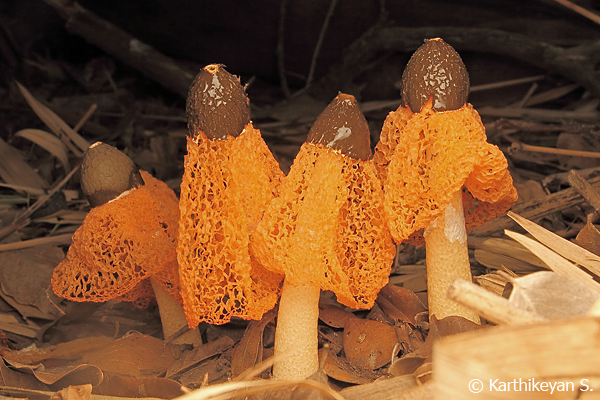I was walking a trail in the midst of a beautiful moist deciduous forest in the Western Ghats during the monsoon when I caught sight of something that completely mesmerized me. My eyes and mouth were wide open. My feet refused to move any further. What I saw was sitting pretty on a large bole of a tree that must have been lying there for several months and it was almost black under the influence of the elements and decomposers – decomposers like the Stinkhorn Mushroom! I had never seen anything like it before!
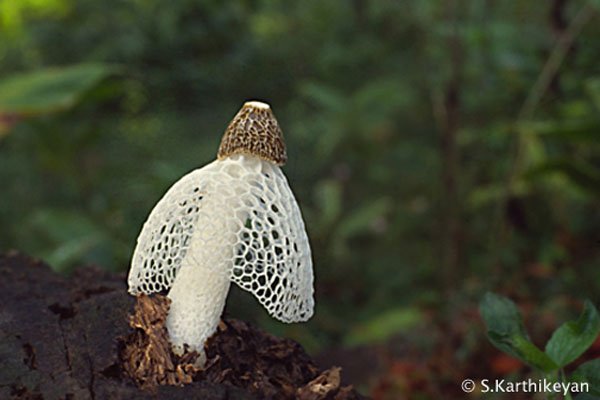
The stinkhorn mushrooms are typical in having a stalk with a mesh-like veil draped over the entire stalk. The veil is mostly held like a skirt around the stalk. Over this is a wrinkled cap. This cap has a foul smell earning this mushroom its name. The cap is also covered with a slimy substance. This smelly head has a very important role to play as it contains the spores (seed equivalent) of the fungi. This foul smell though repulsive to our nose, is very attractive to insects, particularly flies. They visit the cap of the mushroom since it smells like some rotting organic matter – a favourite haunt of flies. They move about on the cap of the mushroom exploring it and feeding on the slime.
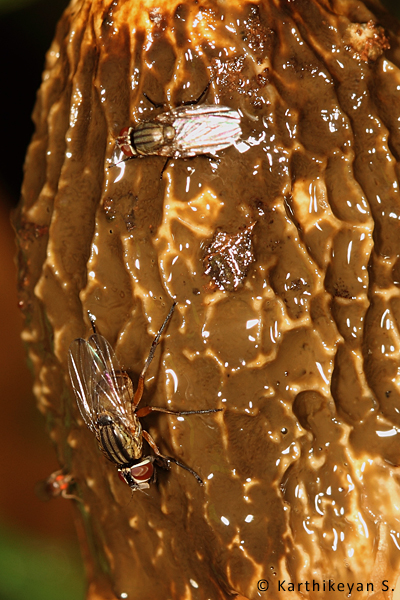 Often, one can see more than one species of fly visiting the Stinkhorn.
Often, one can see more than one species of fly visiting the Stinkhorn.
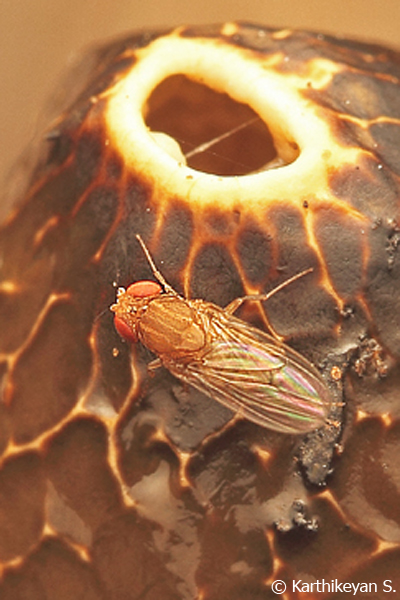
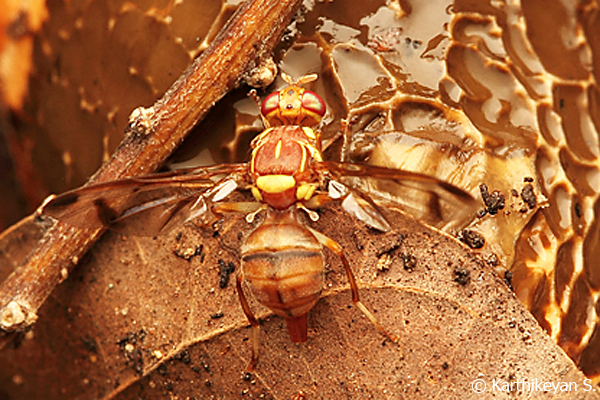
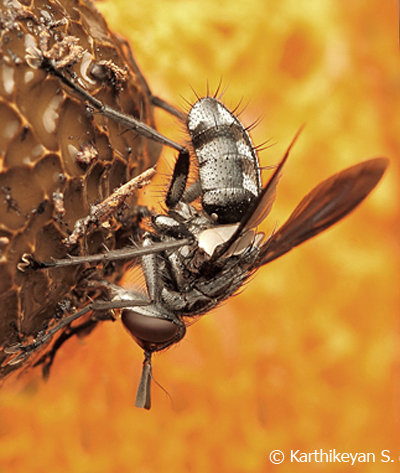
During this process, spores stick to their legs and mouthparts. These then get transported to other places which the flies may visit – most often places that may be suitable for the growth of a new stinkhorn mushroom! This is an interesting association where the fungi use insects as carriers of the spores.
In recent times, I have seen a Stinkhorn Mushroom with an orange veil, both in the forests and in urban spaces with ample rotting woody matter. And, they are as stunning as the one with the white veil.
